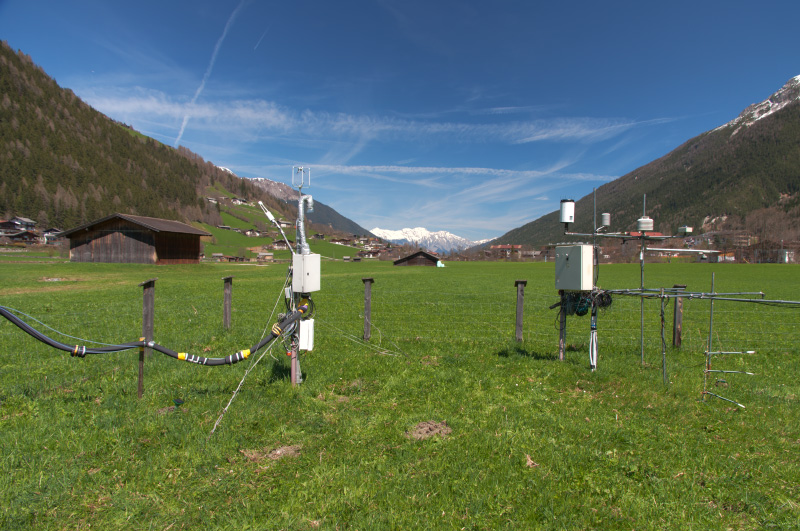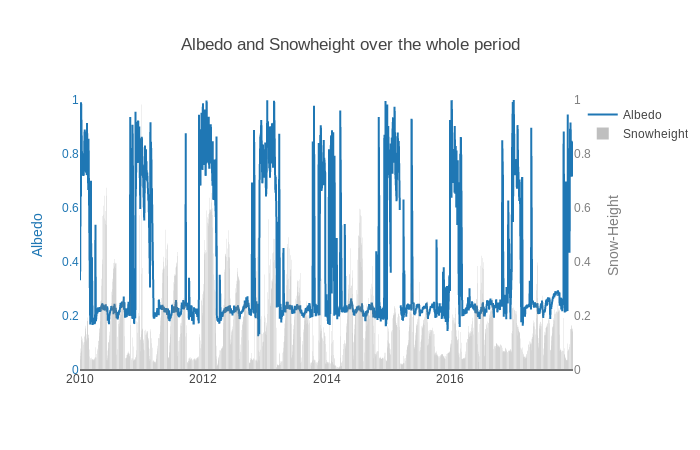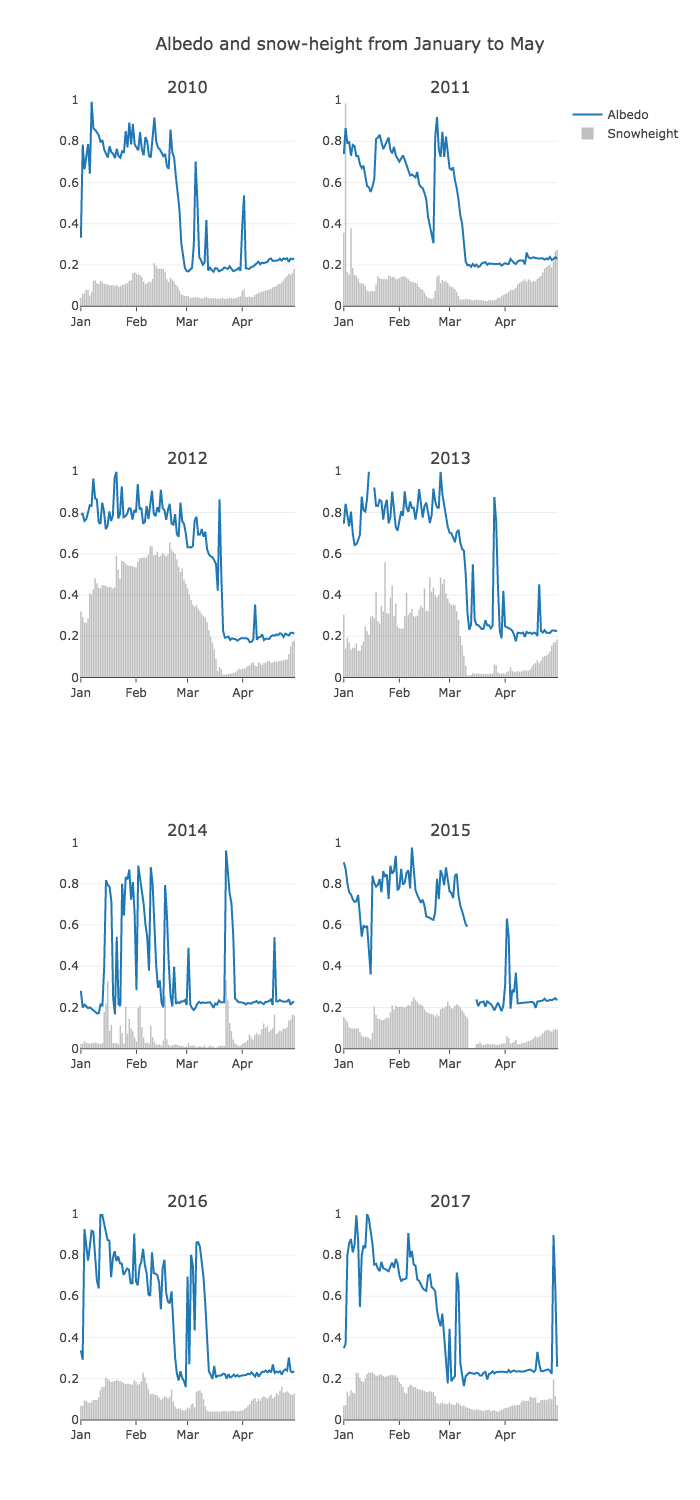Analysis of the albedo in transition between snow and snow-free conditions in Neustift
Authors: Felix Thiemann, Moritz Trichtl
Peer-review: Zora Schirmeister, Lilian Schuster
Code used to generate these plots

In our investigation it is hypothesized that the albedo is higher on skiing slopes compared to natural terrain due to a prolonged artifical snow-cover in spring. To get an idea about the differences in albedo of snow and grass, data from the automatic weather station in Neustift (Stubaital) is used. The available data spans over a time-period from 2010 to 2017 in which especially the transition time from snow to snow-free conditions was analysed.
 Click on the image for an interactive version!
Click on the image for an interactive version!
In the plot above you can see the daily average albedo and the measured snow-height for the whole eight years of available data. Already in this plot it is easy to see that there is a big difference in the albedo values between summer and winter. For all years the albedo in summer is quite constant with values slightly above 0.2. In winter the albedo fluctuates stronger but is mostly in a range between 0.7 and 1.
The positive snow-height measurements in summer are caused by the lawn under the sensor. The sensor just measures the distance to the ground and cannot detect whether the ground is snow or grass. When the snow height measurements suddenly drop in summer it is a sign that the grass was cut. It is interesting to see that with cutting the grass the albedo also drops.
To get a better idea how the albedo behaves when the snow melts in spring, the time from January until the end of April for each year is investigated more precisely.
 Click on the image for an interactive version!
Click on the image for an interactive version!
In all years it is clearly visible that there is a time in spring, when the albedo reaches a value of about 0.2 and stays fairly constant. The attainment of this value is accompanied with a local minimum in the snow height. This indicates the point when the snow is gone and the grass starts growing. So we can conclude that the albedo of grass is about 0.2. Separate spikes after the albedo had already reached its value for grass are caused by new snowfalls and the resulting snow cover.
With snow cover the albedo value is not as constant as it is for grass. It varies between values of above 0.9 for fresh snow and a value of 0.6 for old snow. Compared with the snow height values we can see, that the albedo increases after snowfall and decreases with the age of snow. It decreases also when the snow cover starts to melt.
The transition between the albedos of snow and grass happens in a matter of days in each year. The decrease in the albedo before the snow is totally gone is caused by a film of meltwater on top of the snow or by a mix of snow and grass albedo caused by patches where the snow is already gone.
- The effect of the decreasing albedo with age of the snow can nicely be observed in 2011. Between the middle of January and the middle of February the snow height is fairly constant and the albedo slowly decreases.
- The effect of snowfall after the snow cover was already melted can be seen in several years, for example in 2014 with a snowfall in the end of March, which led to an increase of the albedo from about 0.2 to about 0.9.